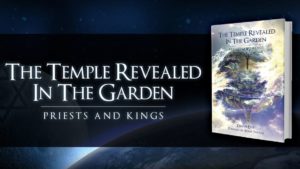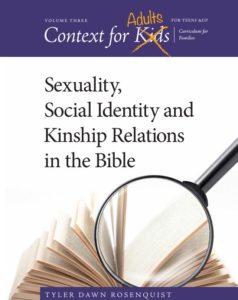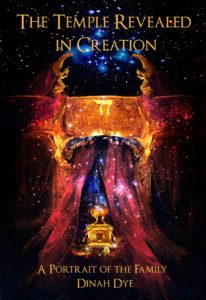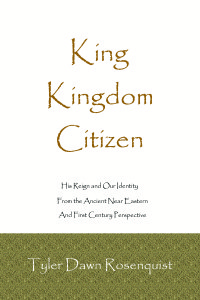 There is a disturbing tendency that has come out of some facets of Messianic Judaism and the Hebrew Roots Movement to label any praise of Yeshua/Jesus as a sin – and yet few people know that has its source, not in the Bible, which clearly presents two divine figures in Daniel 7 to sit on the two thrones mentioned in verse 9 (the great Rabbi Akiva, post Yeshua, even mentioned it). But this devastating doctrine is a trap laid by the Jewish scholars of the Middle Ages, not to convert gentiles, but to prevent Jews from believing in Yeshua as Messiah – as though Judaism had always agreed uniformly on these principles. In the 12th century, Maimonides (RAMBAM) wrote the famous 13 articles of faith that modern Judaism is founded on, and it is easy to see that they were written as a response to a Christianity that was increasingly hostile towards Judaism, shamefully so. The way these were written up makes charges of idolatry inevitable (yet without merit) when we praise and even worship Yeshua – but, the idea that we are bound by the writings of RAMBAM, regardless of his brilliance (I greatly value his insights into the Mishnah), is misguided. RAMBAM was reacting to a clear and present danger, and we cannot blame him for it – what was being done to Jews in the Name of their Messiah was clearly not of the character of God and it is no wonder they could not see their King. In this chapter from my book King, Kingdom, Citizen: His Reign and Our Identity, I tackle the faulty doctrine of not being permitted to praise Yeshua head on, of it being enough to simply acknowledge the Father. For a while, I followed that doctrine, and the anti-missionaries (people who used to believe in Yeshua and who have denied him or Jews who actively try and keep other Jews from coming to their Messiah) almost nabbed me four years ago by approaching me through the underhanded schemes of someone who presented himself as a friend. Refusing to acknowledge Messiah as my Lord and Master was an unwittingly treacherous step towards denying Him altogether – quite ungracious when I consider His sacrifice on our behalf.
There is a disturbing tendency that has come out of some facets of Messianic Judaism and the Hebrew Roots Movement to label any praise of Yeshua/Jesus as a sin – and yet few people know that has its source, not in the Bible, which clearly presents two divine figures in Daniel 7 to sit on the two thrones mentioned in verse 9 (the great Rabbi Akiva, post Yeshua, even mentioned it). But this devastating doctrine is a trap laid by the Jewish scholars of the Middle Ages, not to convert gentiles, but to prevent Jews from believing in Yeshua as Messiah – as though Judaism had always agreed uniformly on these principles. In the 12th century, Maimonides (RAMBAM) wrote the famous 13 articles of faith that modern Judaism is founded on, and it is easy to see that they were written as a response to a Christianity that was increasingly hostile towards Judaism, shamefully so. The way these were written up makes charges of idolatry inevitable (yet without merit) when we praise and even worship Yeshua – but, the idea that we are bound by the writings of RAMBAM, regardless of his brilliance (I greatly value his insights into the Mishnah), is misguided. RAMBAM was reacting to a clear and present danger, and we cannot blame him for it – what was being done to Jews in the Name of their Messiah was clearly not of the character of God and it is no wonder they could not see their King. In this chapter from my book King, Kingdom, Citizen: His Reign and Our Identity, I tackle the faulty doctrine of not being permitted to praise Yeshua head on, of it being enough to simply acknowledge the Father. For a while, I followed that doctrine, and the anti-missionaries (people who used to believe in Yeshua and who have denied him or Jews who actively try and keep other Jews from coming to their Messiah) almost nabbed me four years ago by approaching me through the underhanded schemes of someone who presented himself as a friend. Refusing to acknowledge Messiah as my Lord and Master was an unwittingly treacherous step towards denying Him altogether – quite ungracious when I consider His sacrifice on our behalf.
Bottom line: Yeshua is the absolute image of God on earth. When we look at Him we see the Father, and I for one am not capable of looking at the image of the Father and not falling to my knees in devotion. If a human saved my life, I would certainly praise him (I just wouldn’t worship him), but when the divine son of God saves the lives of all the world who look to Him – I have to do more than praise Him. Literally no amount of praise is enough. Yeshua only did whatever He saw the Father doing, and so I have to respond to that with worship – because in so doing, I also heap even more worship and honor on His Father. Make no mistake, how we treat someone’s son is how we are treating them, and we cannot fool ourselves into thinking we can all but ignore Messiah, withhold the honors due to Him, and be pleasing to God.
Why Do We Need the Heir?
The Father is Spirit, unseen,[1] and does not directly interact with humanity in human form. He is the great Suzerain in the Heavens and He has always interacted with His people through the Word. Through Scripture, we see the Word made manifest as the Angel of the LORD or YHVH who spoke with Moses face to face; but most recently and profoundly, we see the Word made flesh as Yeshua ben Joseph. We need Him. The Kingdom of Heaven needs a flesh and blood monarch, an heir to the Kingdom of God; we have already proven that in the absence of physical, godly leadership we are easily corrupted.
That’s fine, you may say – but why do we need to acknowledge Him now? Isn’t it enough to just worship God the Father? Why is it important to understand the concepts of King and Kingdom and to recognize the legitimate Heir? In summary of the first three sections and giving a short introduction for the fourth:
Messiah was born into a pre-existing Kingdom; He did not have to die and resurrect to create a new one. This Kingdom was not the Kingdom of the Jews but the Kingdom of God and it had been closed off – made exclusive. Contrary to Torah law, the House of Shammai Pharisees made it virtually impossible not only for the lost tribes of Israel to return from exile and divorce, but also for the Gentile Nations to enter in.
Matthew 23:13 “But woe to you, scribes and Pharisees (of the House of Shammai), hypocrites! For you shut the kingdom of heaven in people’s faces. For you neither enter yourselves nor allow those who would enter to go in.”
That’s why it was so important for the Heir to the Kingdom to show up and “lay down the law,” so to speak. Preaching on behalf of the Father, and using only His Father’s words, Yeshua deflated the importance of the traditions of the elders (now found recorded in the Talmud) and elevated the original laws of the Kingdom. He promoted His Father as the great King who alone had the right to determine the rules and regulations, the legal Constitutional requirements placed upon the citizens of His own Kingdom. By upholding His Father’s ways, by showing Himself to be righteous and just towards the poor, sick, widows, orphans and oppressed, through signs and wonders, and through a renewal of the original Kingdom Covenant by His own blood ratification, He proved that He was indeed the Son of the Father. Yeshua, through His words and actions, showed us the character of His Father, the Great King. When we look at His character and say, “I do not recognize YHVH in the works of Yeshua,” we are refusing to acknowledge the most excellent character of our King.
Yeshua was more than a prophet, He was a living, breathing, dare – “Tell me that you know My Father and do not see Him in my every righteous action! If you don’t recognize Him when you see Me, then you do not know Him – we are One.”
John 14:9 Jesus said to him, “Have I been with you so long, and you still do not know me, Philip? Whoever has seen me has seen the Father. How can you say, ‘Show us the Father’?
Why can’t we have the Father without the Son?
John 14:6 Jesus said to him, “I am the way, and the truth, and the life. No one comes to the Father except through me.”
Why can’t we be in good standing in the Kingdom of God without recognizing the Son? When we refuse to acknowledge the Son, not only are we failing to recognize the righteousness and justice of our King, but we are refusing to recognize His Heir to the kingdoms of the world. If I were a righteous Queen, and I sent my son out among my own people to represent me – and if he was a good and righteous man, if no fault could be found with him, if there was no sin (violation of my kingdom laws) to be found in him, if he not only upheld my every law but also taught others to follow them, if he restored the original intentions of my laws, if he railed against those who set up their own laws and illegitimate kingdoms within my kingdom, if he showed my character by having mercy upon the “least of these” … and if you turned around and said that you “didn’t see the resemblance” then it would not matter what you did – there would be no intimacy between us. You would be insulting me. If you claimed to know me, and to represent me, but you didn’t know me well enough to see me in my own son – then although you might live without going to jail because you kept my laws and were otherwise a good citizen, you would have no part in his coming reign.
Yeshua’s coming reign is a big deal; His reign is about eternal life here on earth.
When someone rejects Messiah, even if they keep the laws and live a blessed life because of it (because obedience to the laws of a kingdom will always result in blessing, it’s just simple logic), they will have no part in the Kingdom when it passes into His hands.
Rev 11:15 Then the seventh angel blew his trumpet, and there were loud voices in heaven, saying, “The kingdom of the world has become the kingdom of our Lord and of his Christ, and he shall reign forever and ever.”
Messiah, coming in the mercy of the Father, reopened the gates of the Kingdom of Heaven to all those from around the world who would recognize the heir and desire to live as good citizens in His Kingdom. This was the original intent at Sinai, “one law for all, the native and the foreigner.”
Ex 12:49 There shall be one law for the native and for the stranger who sojourns among you.” (see also Lev 24:22 You shall have the same rule for the sojourner and for the native, for I am the LORD your God.”)
The world was meant to see the righteousness and justice of God, His mercy and kindness, through those laws that were so different from the laws of men – the world was meant to desire to live under those laws, to recognize the wisdom of the citizens of the Kingdom of God.
Deut 4:6-8 Keep therefore and do them; for this is your wisdom and your understanding in the sight of the nations, which shall hear all these statutes, and say, Surely this great nation is a wise and understanding people. For what nation is there so great, who hath God so nigh unto them, as the Lord our God is in all things that we call upon him for? And what nation is there so great, that hath statutes and judgments so righteous as all this law, which I set before you this day?
The pagan nations were supposed to look at their own laws and see how burdensome they were, how unrighteous and unjust – and by extension how lacking their own gods were. Israel was meant to be a light – attracting the world to the King of kings. But they hid that light under a bushel basket, and they greedily kept it for themselves. Messiah came to change that. He is the light; He is the perfect representation of the perfection of the Father and of His goodness and justice and righteousness.
Matt 5:15 Nor do people light a lamp and put it under a basket, but on a stand, and it gives light to all in the house.
We were created to desire that righteousness, but we were trained by the world to resent it. We were meant to desire His rule, but we were taught to fear it. We have been conditioned to want a King who has no ability to rule us – but a King without laws is a King without dominion, authority, or power. From the beginning, God has been looking for good citizens for His Kingdom so that it can shine like a gleaming city on a hill. We owe it to Him to draw people to His righteousness by exemplifying who He is, by following the example of the Son.
We owe it to Him to become citizens of the Kingdom of Heaven – not in the future, but now – establishing His dominion across the face of the earth. This was the original plan in the Garden, renewed again at Mt Sinai with the blood of animals, and then finalized with the righteous blood of Yeshua.
We all owe Him everything, but in the first century, something very serious was happening that kept some from giving Him anything at all. We see glimpses of this problem in the gospels, and we see Paul fighting it tooth and nail in the epistles. Between the return of the Jews from exile and the ministry of Yeshua, something had gone terribly wrong. That something was preventing people from entering into the Kingdom of Heaven, and if we don’t understand what that was, we will never fully understand what Yeshua came to fulfill or what Paul was writing to the assemblies about.
[1] John 1:18; Col 1:15; I John 4:12, etc.
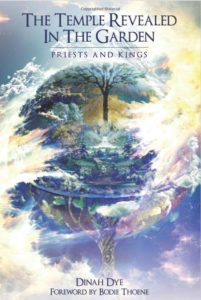 I am eternally grateful to have friends who can do things that I can’t do – like writing about the Temple patterns scattered from Genesis to Revelation from a very Messianic Jewish point of view. Now, don’t let world-renowned artist Robin Hanley’s beautiful cover artwork give you the wrong impression that Dr. Dinah Dye has written a treatise about flat earth, quite the contrary. As in Volume one, The Temple Revealed in Creation, Dr. Dye delves deeply into ancient cosmological imagery (the way ancient people saw the universe) in order to open our eyes to how the first few chapters of Genesis would have been understood by the authors themselves. To call the information itself life-changing is an understatement because she goes way beyond facts and data and presents us with short fictional Midrashic vignettes, fictional little “what if” stories meant not to lay down an alternative account of what happened in the Garden, but instead to put us more into the shoes of the original ancient Near Eastern audience.
I am eternally grateful to have friends who can do things that I can’t do – like writing about the Temple patterns scattered from Genesis to Revelation from a very Messianic Jewish point of view. Now, don’t let world-renowned artist Robin Hanley’s beautiful cover artwork give you the wrong impression that Dr. Dinah Dye has written a treatise about flat earth, quite the contrary. As in Volume one, The Temple Revealed in Creation, Dr. Dye delves deeply into ancient cosmological imagery (the way ancient people saw the universe) in order to open our eyes to how the first few chapters of Genesis would have been understood by the authors themselves. To call the information itself life-changing is an understatement because she goes way beyond facts and data and presents us with short fictional Midrashic vignettes, fictional little “what if” stories meant not to lay down an alternative account of what happened in the Garden, but instead to put us more into the shoes of the original ancient Near Eastern audience.